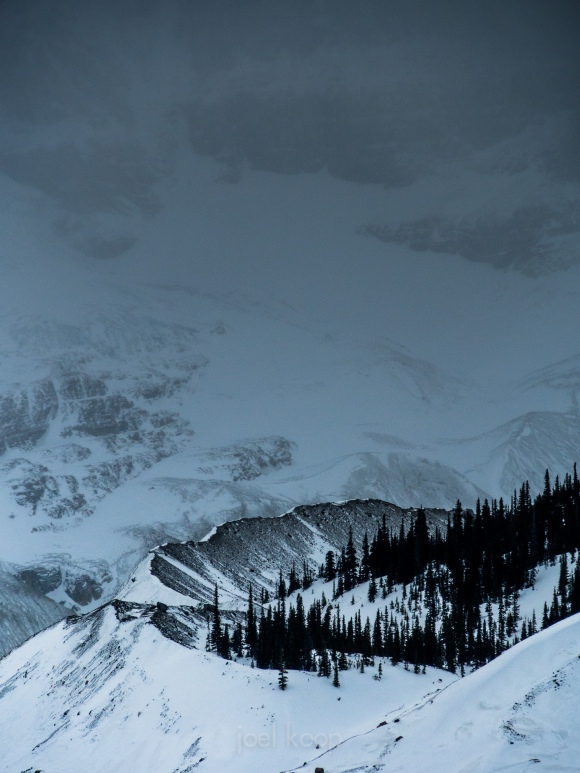The ridge around those spruce trees is called a “lateral moraine” and was left behind by the Athabasca Glacier as it receded. I took this photo at the Columbia Ice Fields on a dark and cloudy day. I get the sense that this moraine is protecting the trees — like they’re sitting safe in their own fortress. And then I notice the mountain behind, which, by it’s comparative mass, renders the trees and moraine almost insignificant.
If you’re not interested in lenses, feel free to ignore the next bit. The photo is taken with the Panasonic 100-300 lens on my Olympus OM-D. When I got this lens, I was worried about it not being very sharp. I have looked up many reviews, but a lot of the photos in the reviews had shutter speeds under 1/1000 of a second with image stabilization turned on. It seems to me that this comments on the effectiveness of the IS, but says nothing about how sharp the lens is. Even using the lens on a tripod I find to be questionable because the center of balance is far infront of the tripod. So I ordered a lens collar with a tripod foot from Rudolf Rösch Feinmechanik. It didn’t get here in time for my trip to the mountains, so I don’t have a definitive review on the sharpness of the lens, but my initial impressions are that, while not being razor sharp, it is fairly good. The lens collar itself is beautiful — I’m thoroughly impressed. I will be using it a lot in the next while, and I’ll report back on its effectiveness.
1/4000 of a second, f7.1, 140mm
